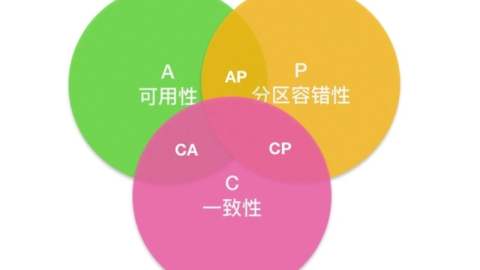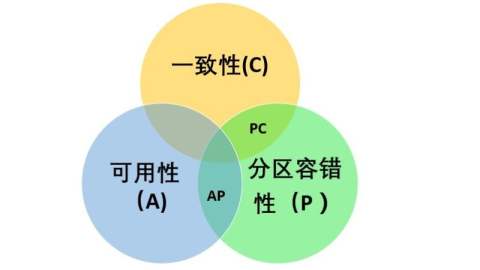转载声明:文章链接:https://www.cnblogs.com/CherishFX/p/4608880.html
栈:LIFO(后进先出)
队列:FIFO(先进先出)
栈的顺序存储结构实现:
/**
* 基于数组实现的顺序栈
* @param <E>
*/
public class Stack<E> {
private Object[] data = null;
private int maxSize=0; //栈容量
private int top =-1; //栈顶指针
/**
* 构造函数:根据给定的size初始化栈
*/
Stack(){
this(10); //默认栈大小为10
}
Stack(int initialSize){
if(initialSize >=0){
this.maxSize = initialSize;
data = new Object[initialSize];
top = -1;
}else{
throw new RuntimeException("初始化大小不能小于0:" + initialSize);
}
}
//判空
public boolean empty(){
return top==-1 ? true : false;
}
//进栈,第一个元素top=0;
public boolean push(E e){
if(top == maxSize -1){
throw new RuntimeException("栈已满,无法将元素入栈!");
}else{
data[++top]=e;
return true;
}
}
//查看栈顶元素但不移除
public E peek(){
if(top == -1){
throw new RuntimeException("栈为空!");
}else{
return (E)data[top];
}
}
//弹出栈顶元素
public E pop(){
if(top == -1){
throw new RuntimeException("栈为空!");
}else{
return (E)data[top--];
}
}
//返回对象在堆栈中的位置,以 1 为基数
public int search(E e){
int i=top;
while(top != -1){
if(peek() != e){
top --;
}else{
break;
}
}
int result = top+1;
top = i;
return result;
}
}栈的链式存储结构实现:
public class LinkStack<E> {
//链栈的节点
private class Node<E>{
E e;
Node<E> next;
public Node(){}
public Node(E e, Node next){
this.e = e;
this.next = next;
}
}
private Node<E> top; //栈顶元素
private int size; //当前栈大小
public LinkStack(){
top = null;
}
//当前栈大小
public int length(){
return size;
}
//判空
public boolean empty(){
return size==0;
}
//入栈:让top指向新创建的元素,新元素的next引用指向原来的栈顶元素
public boolean push(E e){
top = new Node(e,top);
size ++;
return true;
}
//查看栈顶元素但不删除
public Node<E> peek(){
if(empty()){
throw new RuntimeException("空栈异常!");
}else{
return top;
}
}
//出栈
public Node<E> pop(){
if(empty()){
throw new RuntimeException("空栈异常!");
}else{
Node<E> value = top; //得到栈顶元素
top = top.next; //让top引用指向原栈顶元素的下一个元素
value.next = null; //释放原栈顶元素的next引用
size --;
return value;
}
}
}基于LinkedList实现的栈结构:
import java.util.LinkedList;
/**
* 基于LinkedList实现栈
* 在LinkedList实力中只选择部分基于栈实现的接口
*/
public class StackList<E> {
private LinkedList<E> ll = new LinkedList<E>();
//入栈
public void push(E e){
ll.addFirst(e);
}
//查看栈顶元素但不移除
public E peek(){
return ll.getFirst();
}
//出栈
public E pop(){
return ll.removeFirst();
}
//判空
public boolean empty(){
return ll.isEmpty();
}
//打印栈元素
public String toString(){
return ll.toString();
}
}队列的顺序存储结构实现
public class Queue<E> {
private Object[] data=null;
private int maxSize; //队列容量
private int front; //队列头,允许删除
private int rear; //队列尾,允许插入
//构造函数
public Queue(){
this(10);
}
public Queue(int initialSize){
if(initialSize >=0){
this.maxSize = initialSize;
data = new Object[initialSize];
front = rear =0;
}else{
throw new RuntimeException("初始化大小不能小于0:" + initialSize);
}
}
//判空
public boolean empty(){
return rear==front?true:false;
}
//插入
public boolean add(E e){
if(rear== maxSize){
throw new RuntimeException("队列已满,无法插入新的元素!");
}else{
data[rear++]=e;
return true;
}
}
//返回队首元素,但不删除
public E peek(){
if(empty()){
throw new RuntimeException("空队列异常!");
}else{
return (E) data[front];
}
}
//出队
public E poll(){
if(empty()){
throw new RuntimeException("空队列异常!");
}else{
E value = (E) data[front]; //保留队列的front端的元素的值
data[front++] = null; //释放队列的front端的元素
return value;
}
}
//队列长度
public int length(){
return rear-front;
}
}循环队列的顺序存储结构实现
import java.util.Arrays;
public class LoopQueue<E> {
public Object[] data = null;
private int maxSize; // 队列容量
private int rear;// 队列尾,允许插入
private int front;// 队列头,允许删除
private int size=0; //队列当前长度
public LoopQueue() {
this(10);
}
public LoopQueue(int initialSize) {
if (initialSize >= 0) {
this.maxSize = initialSize;
data = new Object[initialSize];
front = rear = 0;
} else {
throw new RuntimeException("初始化大小不能小于0:" + initialSize);
}
}
// 判空
public boolean empty() {
return size == 0;
}
// 插入
public boolean add(E e) {
if (size == maxSize) {
throw new RuntimeException("队列已满,无法插入新的元素!");
} else {
data[rear] = e;
rear = (rear + 1)%maxSize;
size ++;
return true;
}
}
// 返回队首元素,但不删除
public E peek() {
if (empty()) {
throw new RuntimeException("空队列异常!");
} else {
return (E) data[front];
}
}
// 出队
public E poll() {
if (empty()) {
throw new RuntimeException("空队列异常!");
} else {
E value = (E) data[front]; // 保留队列的front端的元素的值
data[front] = null; // 释放队列的front端的元素
front = (front+1)%maxSize; //队首指针加1
size--;
return value;
}
}
// 队列长度
public int length() {
return size;
}
//清空循环队列
public void clear(){
Arrays.fill(data, null);
size = 0;
front = 0;
rear = 0;
}
}队列的链式存储结构实现
public class LinkQueue<E> {
// 链栈的节点
private class Node<E> {
E e;
Node<E> next;
public Node() {
}
public Node(E e, Node next) {
this.e = e;
this.next = next;
}
}
private Node front;// 队列头,允许删除
private Node rear;// 队列尾,允许插入
private int size; //队列当前长度
public LinkQueue() {
front = null;
rear = null;
}
//判空
public boolean empty(){
return size==0;
}
//插入
public boolean add(E e){
if(empty()){ //如果队列为空
front = new Node(e,null);//只有一个节点,front、rear都指向该节点
rear = front;
}else{
Node<E> newNode = new Node<E>(e, null);
rear.next = newNode; //让尾节点的next指向新增的节点
rear = newNode; //以新节点作为新的尾节点
}
size ++;
return true;
}
//返回队首元素,但不删除
public Node<E> peek(){
if(empty()){
throw new RuntimeException("空队列异常!");
}else{
return front;
}
}
//出队
public Node<E> poll(){
if(empty()){
throw new RuntimeException("空队列异常!");
}else{
Node<E> value = front; //得到队列头元素
front = front.next;//让front引用指向原队列头元素的下一个元素
value.next = null; //释放原队列头元素的next引用
size --;
return value;
}
}
//队列长度
public int length(){
return size;
}
}基于LinkedList实现队列结构
/**
* 使用java.util.Queue接口,其底层关联到一个LinkedList(双端队列)实例.
*/
import java.util.LinkedList;
import java.util.Queue;
public class QueueList<E> {
private Queue<E> queue = new LinkedList<E>();
// 将指定的元素插入此队列(如果立即可行且不会违反容量限制),在成功时返回 true,
//如果当前没有可用的空间,则抛出 IllegalStateException。
public boolean add(E e){
return queue.add(e);
}
//获取,但是不移除此队列的头。
public E element(){
return queue.element();
}
//将指定的元素插入此队列(如果立即可行且不会违反容量限制),当使用有容量限制的队列时,
//此方法通常要优于 add(E),后者可能无法插入元素,而只是抛出一个异常。
public boolean offer(E e){
return queue.offer(e);
}
//获取但不移除此队列的头;如果此队列为空,则返回 null
public E peek(){
return queue.peek();
}
//获取并移除此队列的头,如果此队列为空,则返回 null
public E poll(){
return queue.poll();
}
//获取并移除此队列的头
public E remove(){
return queue.remove();
}
//判空
public boolean empty() {
return queue.isEmpty();
}
}





这题有够坑的,老是错